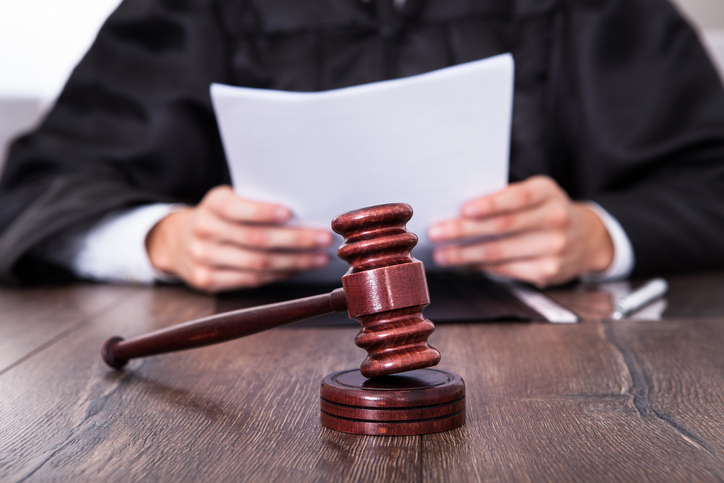Major changes to the environmental protection regime in
NSW have passed Parliament unopposed and entered into force,
doubling maximum penalties for environmental crime and
substantially expanding the investigatory powers of the NSW
Environment Protection Authority.
Snapshot
- On 3 April 2024, the Environment Protection Legislation
Amendment (Stronger Regulation and Penalties) Act 2024
(EPLA Act) entered into force. The EPLA Act amends
the Protection of the Environment Operations Act 1997
(POEO Act) to introduce harsher penalties for
breaches of environmental regulations, and to expand the NSW
Environment Protection Authority’s (EPA)
investigatory powers. - These changes will significantly alter the direction of
environmental protection law in NSW, but there was little debate or
community consultation before the laws passed Parliament on 21
March 2024. The NSW Government has highlighted that more reforms
are likely to follow. - Companies and individuals should seek advice about the
implications of these changes, and how they can mitigate risks
while ensuring their operations are compliant.
Background
The EPLA Act was introduced in response to:
- the perceived gaps in the existing regulatory scheme
highlighted by the ongoing EPA investigation into
asbestos-contaminated mulch found at sites across NSW – the
largest investigation in the EPA’s history; and - the NSW Land and Environment Court’s (LEC)
decision in Bushfire Survivors for Climate Action Incorporate v
EPA [2021] NSWLEC 92 (Bushfire
Survivors), which ordered the EPA to develop environmental
quality objectives, guidelines and policies to ensure environment
protection from climate change.
This note provides an overview of the key changes introduced by
the EPLA Act, which bolster the EPA’s already broad regulatory
powers, and highlights concerns associated with the alarming shift
in the EPA’s regulatory powers.
Key changes
In summary, the EPLA Act:
- significantly increases the maximum penalties for many
environmental offences, with some penalties now up to $10 million
for corporations; - increases penalty infringement notice fines for repeat
offenders, up to $45,000 for corporations; - implements specific penalties for small scale illegal dumping
on sensitive land, including childcare centres, schools, hospitals,
national parks & beaches; - allows the LEC to ban persons from holding an environment
protection licence (EPL); - removes protected document provisions for voluntary environment
audits; - introduces a waste accreditation scheme to classify and assess
waste; and - allows the EPA to:
- issue product recalls for materials that may be contaminated
with harmful substances; - issue public ‘name and shame’ warning statements about
poor environmental practices and performers; - issue ‘preliminary investigation notices’ requiring
recipients to assist the EPA with its investigations; and - require new clean-up actions in notices.
- issue product recalls for materials that may be contaminated
Maximum Penalties
The EPLA Act increases the maximum penalties for environmental
offenses under the POEO Act as follows:
| Offence | Existing Maximum Penalty | New Maximum Penalty |
Tier 1 offences:
|
$5 million for corporations and $1 million for individuals | $10 million for corporations and $2 million for
individuals |
Tier 2 asbestos-related offences, including:
|
$2 million for corporations and $500,000 for individuals | $4 million for corporations and $1 million for individuals |
Some Tier 3 on-the-spot fines, including:
|
$15,000 for corporations and $7,500 for individuals | $30,000 for corporations first offence and $15,000 for
individuals first offence. The EPA may issue larger penalty notices for subsequent
|
| General littering on-the-spot fines | $80 | $160 |
| Small-scale illegal dumping | $15,000 for corporations if issued by the EPA ($8,000
otherwise) and $7,500 for individuals if issued by the EPA ($4,000 otherwise) |
$50,000 for corporations and $25,000 for individuals |
While there is an obvious focus on increasing the penalties that
concern asbestos-related offences in light of the EPA’s ongoing
asbestos investigation, the EPLA Act also dramatically increases
penalties applying to all pollution incident offences.
Prohibiting EPL Applications
In order to prohibit ‘serious’ and ‘serial’
offenders from applying for an EPL, s 253B of the EPLA Act now
allows the LEC to prohibit a person from being involved in a
scheduled activity, or from applying for or holding an EPL, for a
specified or ‘indefinite’ period of time if that person
is:
- likely to engage again, or continue to engage in, unlawful
conduct; or - not a fit and proper person to hold, or continue to hold, an
EPL.
The EPA may also seek that the LEC make such an order.
The EPA already possesses wide ranging powers to refuse, vary,
suspend or cancel an EPL, including in circumstances where an
applicant is not a fit and proper person or has contravened a
condition of an EPL. The new s 253B expands the range of orders
which the EPA may seek in enforcement proceedings.
Preliminary Investigation Notices
A new form of environmental protection notice, known as a
preliminary investigation notice is introduced to Part 4.1A of the
POEO Act.
Under new s 90B, the EPA may issue an owner or occupier of a
premises with an oral or written preliminary investigation notice
if the EPA reasonably suspects that:
- circumstances may exist or have existed that may pose a
potential risk of harm to human health or the environment from a
substance or the deposit of waste; or - a pollution incident may exist or has existed at the
premises.
Once a preliminary investigation notice is issued, the recipient
must ‘assist’ the EPA to investigate whether the relevant
circumstances exist and determine the nature and extent of the
relevant circumstances.
Preliminary investigation notices may compel persons to:
- collect samples of a substance to be tested;
- provide a report to the EPA;
- move substances to a different location (including off the
premises); - restrict access to a substance or location;
- prevent a substance from being removed from the premises;
or - if the person does not comply with the notice, allow the EPA to
take actions to comply with the notice.
If a corporation issued with a preliminary investigation notice
fails to comply with the notice, the EPA may direct the current or
former director(s) or manager(s) of the corporation, or a related
body corporate, to carry out the specified actions. That person can
recover as a debt the costs of complying with the notice from the
person who caused or contributed to the relevant circumstances.
It is an offence to fail to comply with a preliminary
investigation notice. An offence is punishable by a penalty of up
to $2,000,000 for corporations with a further penalty of $240,000
for each day the offence continues, or up to $500,000 for
individuals with a further penalty of $120,000 for each day the
offence continues.
This is a dramatic reform that significantly increases the
EPA’s power to compel a person to assist the EPA’s
investigatory functions and to require a recipient to pay all or
any reasonable costs and expenses incurred by the EPA. The results
of a preliminary investigation could be used by the EPA in
prosecuting the person to whom it is issued.
There is no merits appeal pathway for preliminary investigation
notices, and the only recourse a recipient might have is the blunt
instrument of a Class 4 claim in the LEC seeking judicial review of
the EPA’s exercise of its functions.
Recall Notices
The EPLA Act also allows the EPA, with the approval of the
Minister, to issue a ‘recall notice’ to any person involved
in the supply chain of a substance if, in the EPA’s
opinion:
- a substance, or its use, poses a potential risk of harm to
human health or the environment; - a substance must comply, but does not comply, with a prescribed
standard; or - environment protection legislation has been contravened.
A recall notice may require a recipient to:
- stop producing and / or supplying the substance;
- take action to recover the substance and return it to a supply
chain participant’s premises or another specified
location; - sample, test, remediate or dispose of the substance;
- provide information and records to the EPA;
- publish warnings that the substance is being recalled; and /
or - destroy the substance or dispose of it lawfully.
If a corporation issued with a recall notice fails to comply
with the notice, the EPA may direct the current or former
director(s) or manager(s) of a supply chain participant, or a
related body corporate, to carry out the specified actions. The
EPA’s powers (subject to Ministerial approval) are far-reaching
and could have grave legal, commercial, reputational and economic
implications for supply chain participants, particularly where:
- a recall notice is not administratively reviewable, and a court
in judicial review proceedings is prevented by the amendments from
granting a stay; and - it is an offence to fail to comply with a recall notice
punishable by a penalty of $2,000,000 for corporations with a
further penalty of $240,000 for each day the offence continues, or
$500,000 for individuals with a further penalty of $120,000 for
each day the offence continues.
Voluntary Environmental Audits
The EPLA Act removes the protected document provisions for
voluntary environmental audits within ss 181-184 of the POEO
Act.
Prior to this amendment, documents prepared for the sole purpose
of a voluntary environmental audit were protected documents which
were inadmissible in administration or enforcement proceedings.
Such documents could not be inspected, copied or otherwise obtained
by the EPA for any purpose connected with the enforcement of the
POEO Act.
With the repeal of these provision, any material prepared whilst
carrying out a voluntary environmental audit (the purpose of which
is to ensure compliance or improve environmental performance) can
now be used in enforcement proceedings, unless another protection
(such as legal professional privilege) applies to the document.
Public warning statements
The EPLA Act introduces a new power under s 319B that allows the
EPA, acting in the public interest, to issue a ‘public
statement’ identifying and giving warnings or information
about:
- substances or activities the EPA reasonably suspects of
contributing to a pollution incident; - an activity the EPA reasonably suspects is being carried out in
an environmentally unsatisfactory way; - any activity, person, substance or other matter the EPA
believes is of environmental concern; - regulatory action against a person;
- complaints received by the EPA in relation to a matter; or
- anything relevant to the administration of the POEO Act or the
regulations.
Public warning statements may identify the relevant person,
business practice, substance, premises location, and the basis of
the EPA’s suspicion.
The EPA will not be liable, including for defamation, for any
statement made in good faith.
Although it is common for the EPA to publish information on its
website in relation to regulatory action, including about launching
prosecution, the power to make public warning statements is a
substantial expansion in the EPA’s ability to make unilateral
statements about a business’ conduct, so long as the statement
is reasonable and in good faith.
Clean-up notices
The EPLA Act expands the definition of ‘clean-up action’
to include:
- actions required to restore the environment to a state that is
as close as possible to the state the environment was in
immediately before the pollution incident; and - carrying out or facilitating specified testing or monitoring,
and the provision of that data or reports to the EPA.
The EPA already commonly requires recipients of a clean-up
notice to provide monitoring data during the course of a clean-up
action, so that compliance with environmental protection laws and
notices can be scrutinised.
The expansion of the definition of ‘clean-up action’
will mean that the EPA can build its case against a recipient by
having the person being investigated perform testing and monitoring
for the EPA.
Action on climate change
In responding to the LEC’s Bushfire Survivors decision, the
EPLA Act amends the Protection of the Environment
Administration Act 1991 (NSW) to:
- include “taking action in relation to climate change”
as an objective of the EPA; - allow the EPA to enter into arrangements and purchase property
in relation to carbon neutrality and achieving net zero emissions;
and - clarify that the EPA’s power to create development
objectives, guidelines and policies to ensure environment
protection extends to ensuring protection from climate change.
You can read our notes in relation to the Bushfires Survivors
case here and the EPA’s Climate Change Policy
and Action Plan here.
Key takeaways
The reforms introduced by the EPLA Act significantly change the
landscape of environmental protection in NSW.
Corporations and individuals should:
- anticipate more significant consequences for potential breaches
of the POEO Act; - be aware of the greater level of access to materials available
to the EPA, including by virtue of the repeal of protected document
provisions; - be aware of, and understand, their rights in respect of the
EPA’s new and expansive regulatory powers, including in respect
of preliminary investigation notices, recall notices, clean-up
notices, and public warning statements; - consider the EPLA Act’s focus on Tier 1 serious offences,
and Tier 2 asbestos related offences when seeking to undertake
works; and - anticipate further NSW Government policies and regulations that
provide detail on aspects of the EPLA Act, such as the waste
accreditation scheme.
If you would like to learn more about how the proposed
amendments may impact your business or projects, please contact our
team.
By Peter Briggs, Partner, Andrew Mahler, Solicitor and
Maddie Gelagin, Paralegal.
The content of this article is intended to provide a general
guide to the subject matter. Specialist advice should be sought
about your specific circumstances.
#NSW #Doubles #Penalties #Environmental #Crime #Major #Upheaval #Environmental #Law #Clean #Air #Pollution










